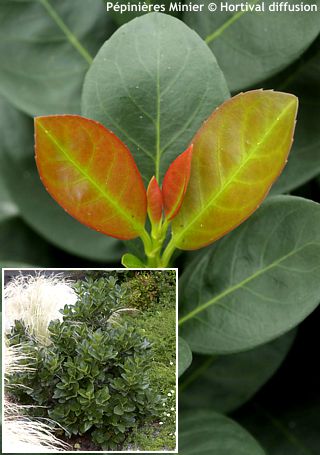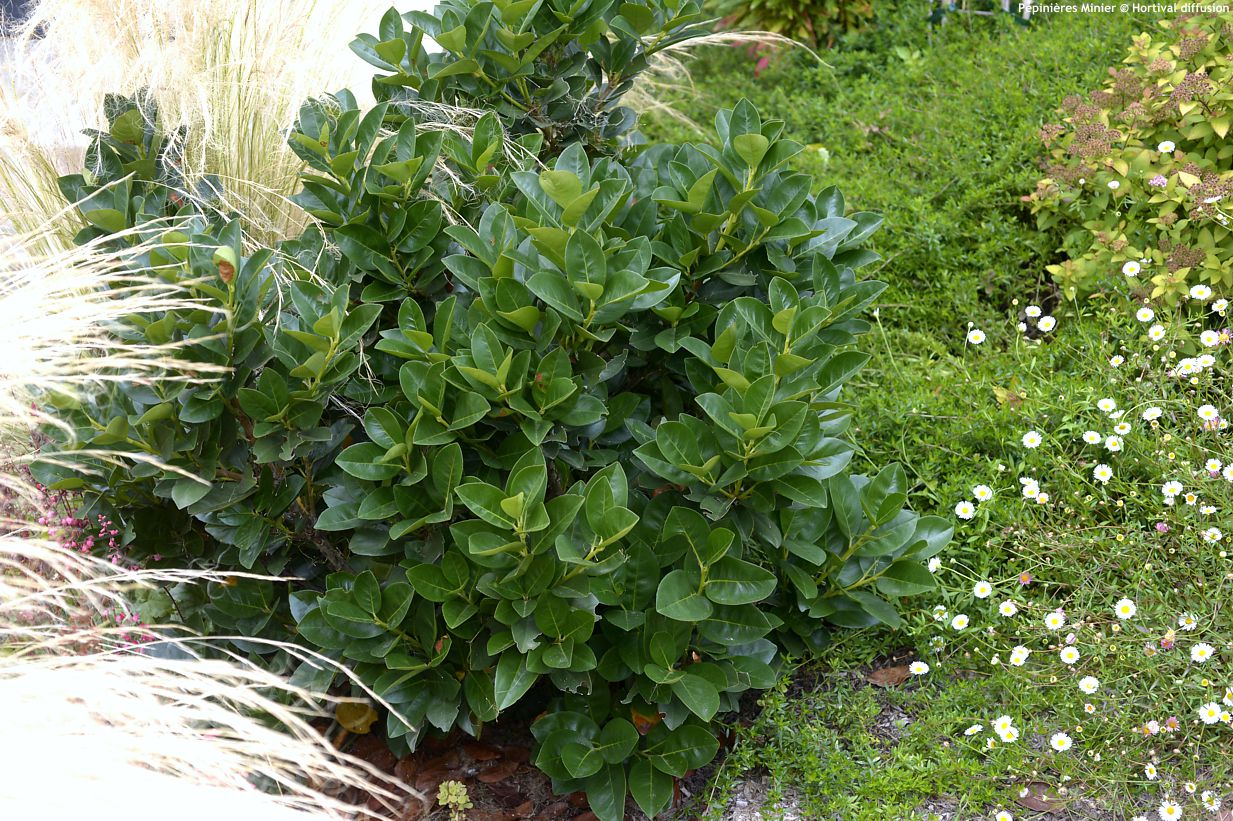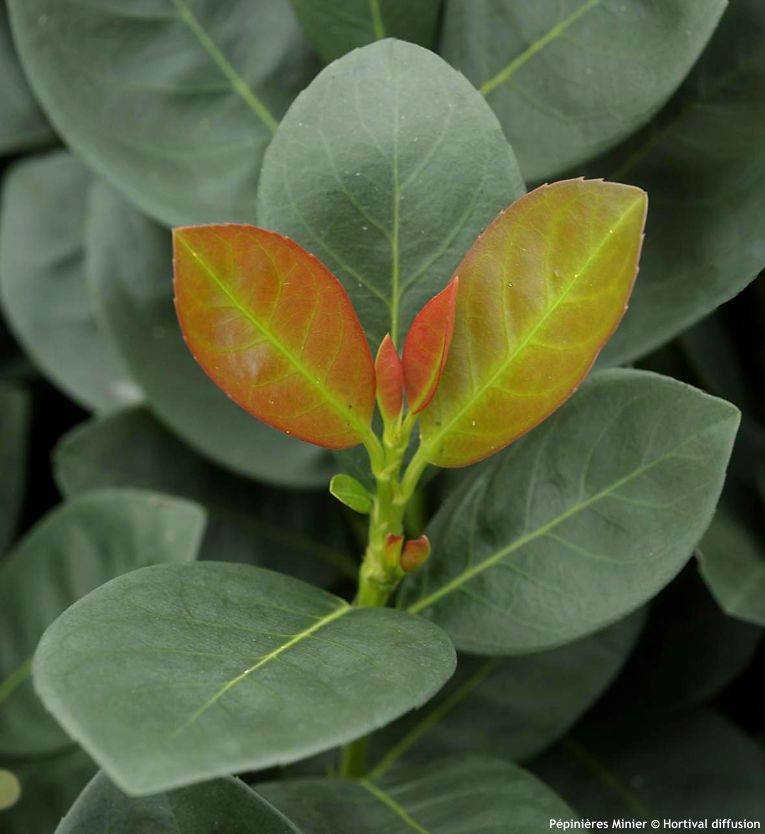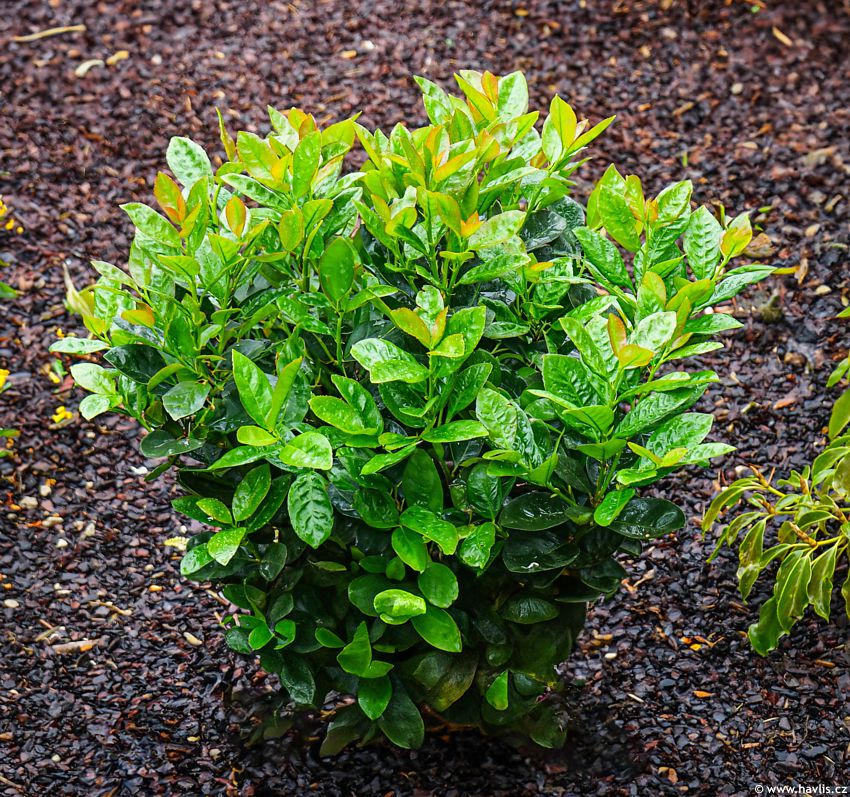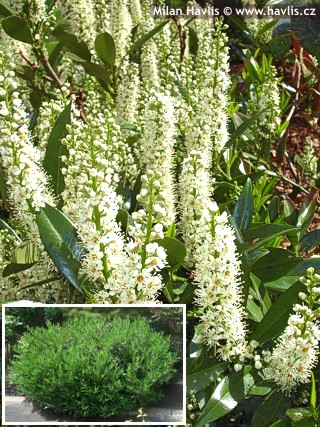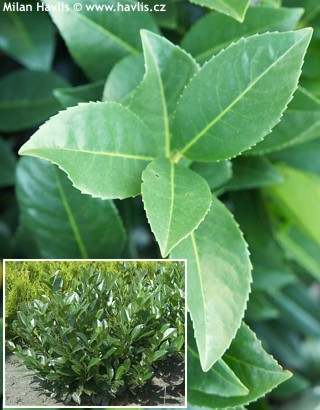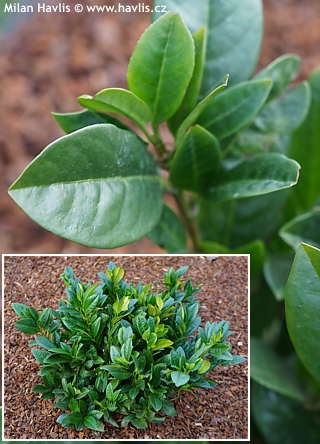Prunus laurocerasus 'MINIREDIA' cherry laurel
size/type
medium-sized shrub,medium-sized shrub
usual height
1-1,5m
usual width
1-1,5m
leaves
evergreen broadleaf
colour of leaves
flowers
less showy but noticeable
colour of flowers
blooming time
April
location
full sun to shade
soil type
acidic (peaty) to neutral
soil moisture requirements
evenly moist but well-drained
USDA zone (lowest)
7 (down to -23°C)
winter protection
for zone 5+6

for zone 7

categorized
Prunus
We are specialists in evergreen plants and we offer the widest possible range of quality and hardy varieties. English (cherry) laurel is probably the most common and reliable species. There are not many dwarf but large-leaved and hardy evergreen shrubs, therefore, every new addition makes us happy.Description of the plant:
Miniredia is a 2021 introduction of dwarf cherry laurel variety from French nursery Hortival Diffusion (Minier). It was bred by Patrick Pineau as a cross between Caucasica Nana and un unnamed seedling. It is a slow-growing shrub with 7-8 cm long, 4-5 cm wide, broadly elliptic, dark green, evergreen and glossy leaves, which emerge in a glowing amber-orange shade like for example ETNA® or BONAPARTE® varieties. It grows slowly and forms very dense, well-branched, rounded shrubs. Its ultimate size is yet to be determined, but is estimated to be around one and a half meters.In April or May appear compound inflorescences made out of small, white, fragrant flowers. They are followed by glossy black berries which, as recent studies confirmed, are not poisonous. Only seeds from unripe fruit if properly chewed may cause discomfort since they contain the same toxin as bitter almonds (source: Plants For A Future - pfaf.org). Miniredia cherry laurel is protected by these patents: PP34406 (USA - 2022), 35416 (GB - 2022) and 60082 (EU - 2022).
Laurels need deep and fertile, acidic, moist but well-drained soil, and extra watering in frost-free periods in winter to prevent from drying out before the ground gets frozen. They love clay lower in the ground but cannot establish if put into solid clay or compacted ground. They thrive in full sun or part shade and will also tolerate being grown in full shade. If all leaves turn pale or even yellow it is a sign of chlorosis (lack of iron in the soil). You can use a special liquid soil pH balancer to keep it acidic which will help the plant absorb iron or you can apply liquid iron. Miniredia is expected to be hardy to at least -24 °C (USDA zone 6), further trials are ongoing.
Last update 03-06-2024
QUICK PRICE OVERVIEW
CURRENTLY SOLD OUT
WANT TO TRY A SIMILAR PLANT?












